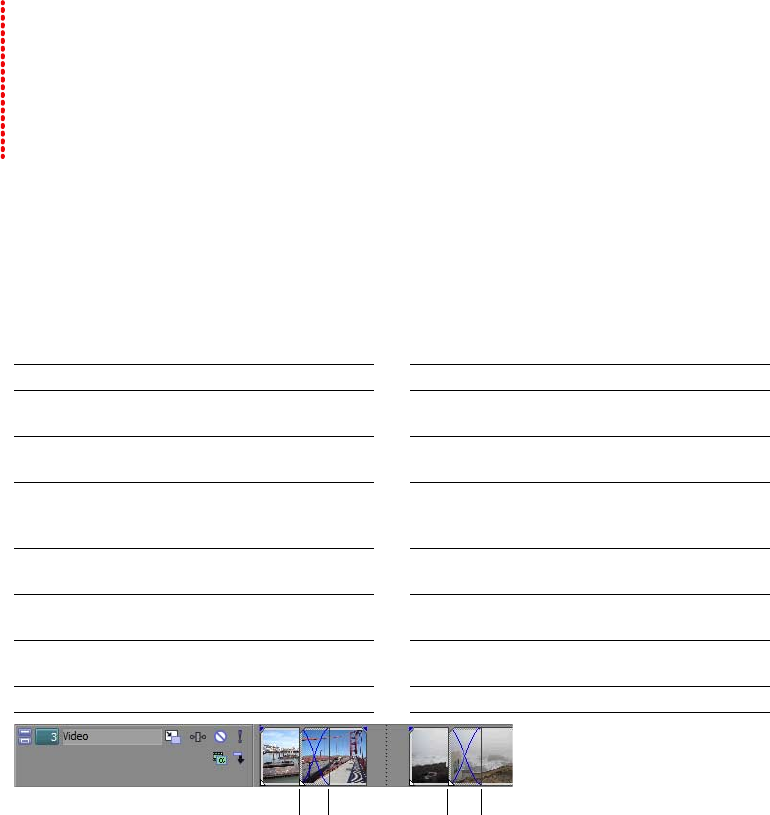
Chapter
3
Basic Editing Techniques
Vegas® Movie Studio HD Platinum projects are multitrack compilations of events that occur over time. The events in
your project are references (pointers) to source media files. Vegas Movie Studio HD Platinum software is a
nondestructive editor, so editing events in your project does not alter the source media files in any way.
Getting around
When editing and playing back the project, the cursor identifies where you are along the project’s timeline.
Moving the cursor
Use the following keyboard commands to move the cursor in the timeline.
Description Keys Description Keys
Go to beginning of project Ctrl+Home or W Move left/right to marker(s) Ctrl+Left/Right
Arrow
Go to end of project Ctrl+End or E Move to marker # 0-9 keys (not
numeric keypad)
Go to beginning of selection or Home Move left/right to event edit Ctrl+Alt+Left/Right
view (if no selection) points including fade edges Arrow
(see figure below)
Go to end of selection or view End Nudge cursor on timeline Left or Right Arrow
(if no selection)
Move right by grid marks Page Down Move left/right one frame Alt+Left/Right
Arrow
Move left by grid marks Page Up Move left/right one frame Ctrl+Alt+Shift+
Mouse wheel
Go to Ctrl+G Center in view \
Event edit point cursor jumps
Changing focus
Focus is used to describe which objects have the attention of a program. For example, when you click a file in the
Project Media list, the Project Media window has focus. To instantly switch the program’s focus to the timeline (track
view), press Alt+0 or, from the View menu, choose Focus to Timeline.
In Vegas Movie Studio HD Platinum software, it matters which track has focus when you perform a task. For example,
when you double-click a media file in the Explorer, it is inserted into the track that has focus. You can click anywhere
in the track header to make it the focus track. A blinking white square next to the track number and shading in the
track list indicates a track has focus.
BASIC EDITING TECHNIQUES | 29
